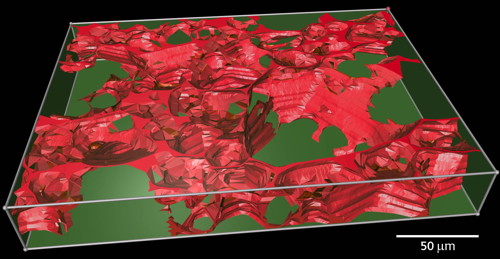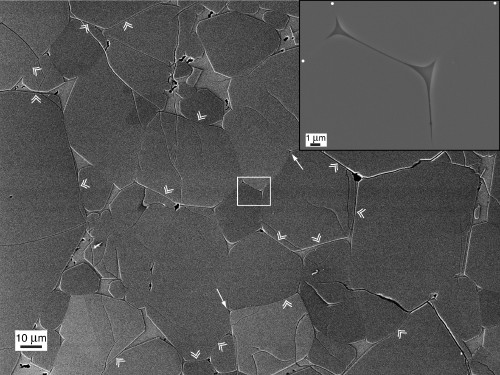3-D Melt Geometry
The 3-D melt geometry determines bulk properties of partially molten rocks, for example seismic properties and permeability. Because of the size of interstitial melt pockets resolution is key to accurate imaging of the melt geometry. This work is funded by The National Science Foundation.
 |
Reconstructed 3-D view of the melt geometry in partially molten dunite from field emission scanning electron microscope images. The 3-D image reveals that the thin layers seen with 2-D imaging (below) are wetted two-grain boundaries. The melt distribution is not static, but dynamically controlled by grain growth, reslulting in a mixture of wetted and melt-free grain boundaries. Higher resolution image here. |
 |
High resolution FESEM image of the same partially molten olivine samples as above. Thin layers of melt wetting two-grain boundaries are indicated by double arrowheads. The arrows point to small triple junctions one μm or less in size. The white dots in the inset denote melt-free grain boundaries. Higher resolution image here. |